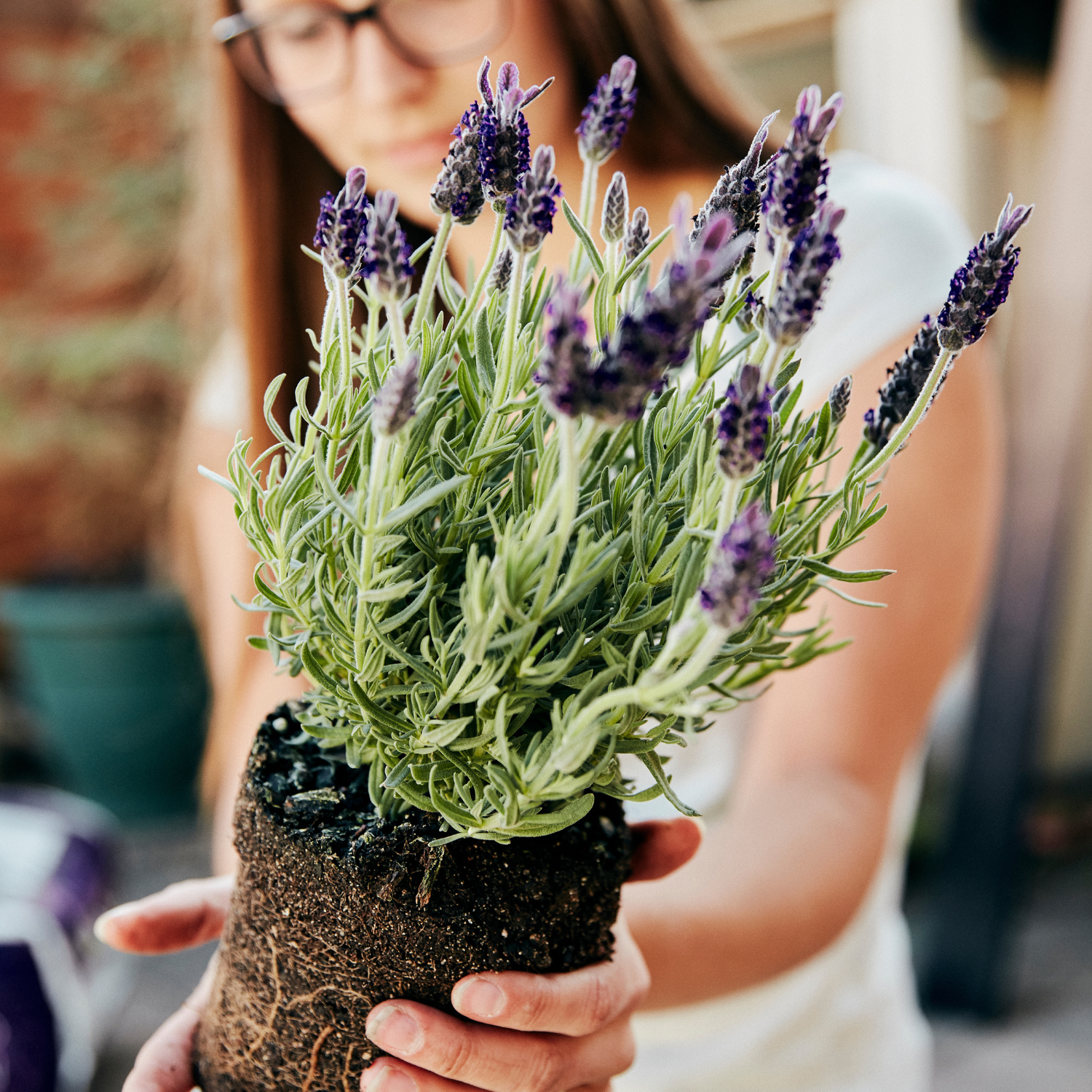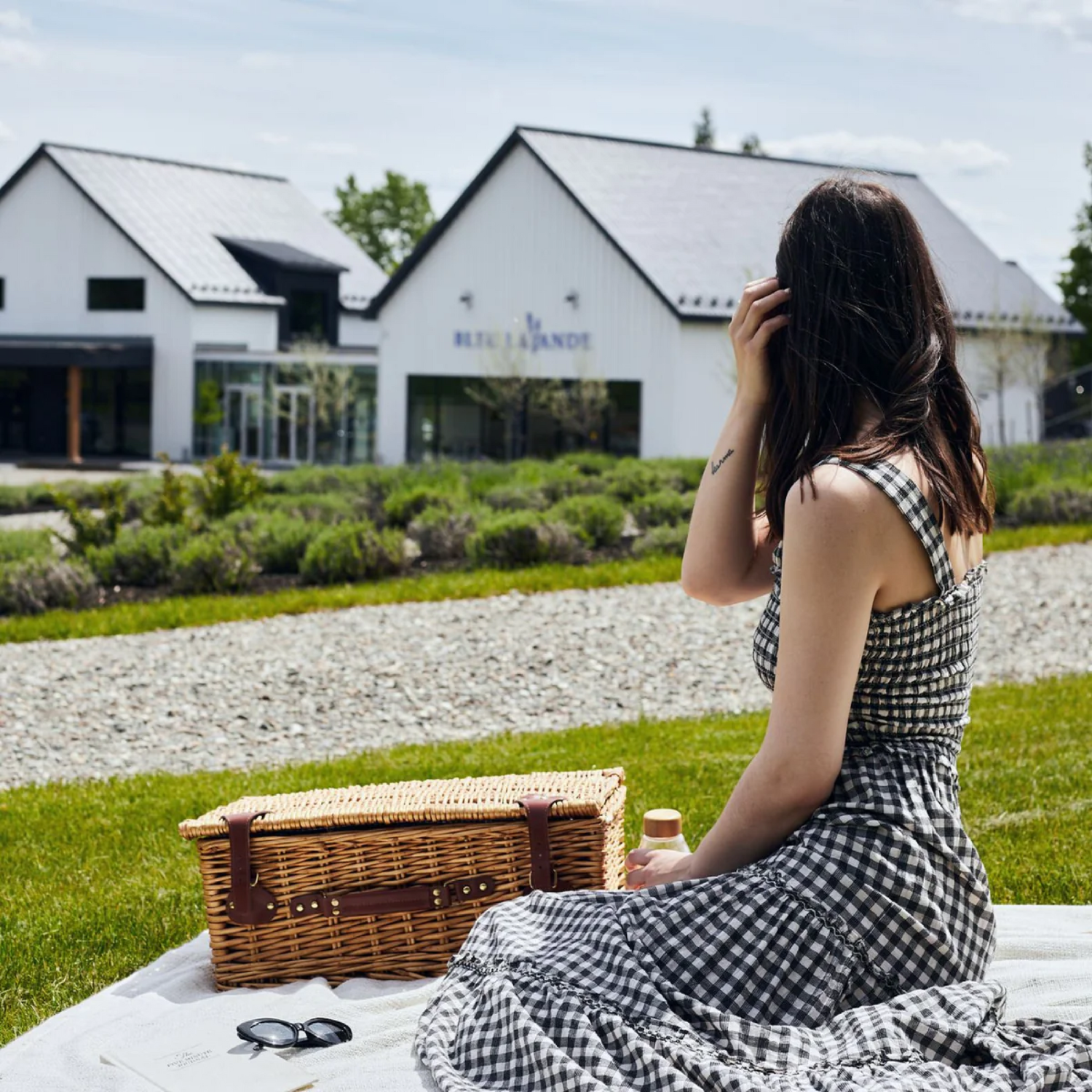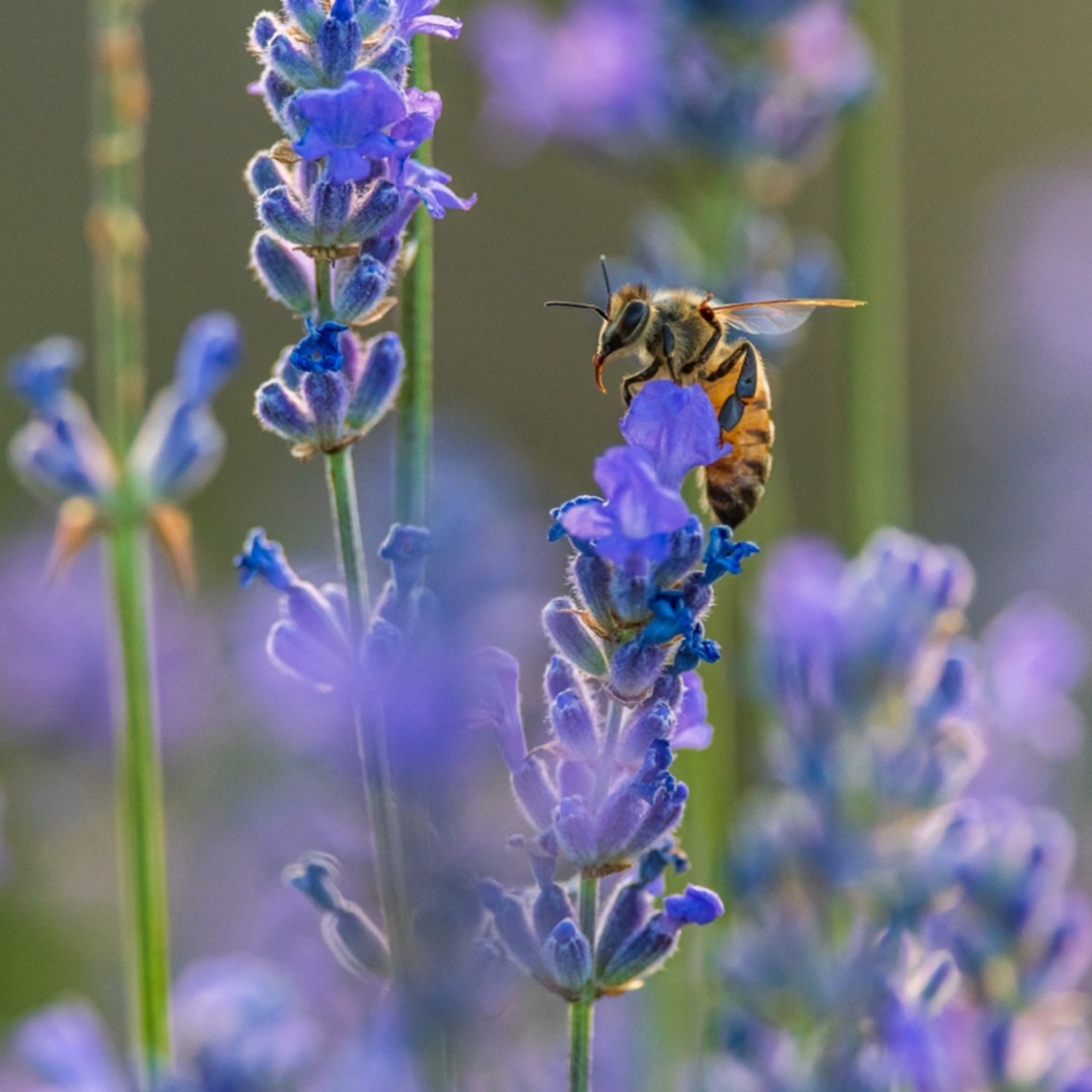Growing Lavender… at Home!
Looking for some tips to help you grow lavender at home? Look no further! The Bleu Lavande team has collected here some of its best advice to help you care for this wonderful flowering plant.
Getting Started
There are many different varieties of lavender. In our Bleu Lavande fields, we grow Munstead lavender, Lavandin, and Russian Sage (sometimes called Afghan Lavender in French). You might not be sure which one is best for you, but all varieties of lavender can be grown, so make your choice depending on their scent, their form, their size, and the suitability of your soil.
Springtime
If you want to plant lavender seedlings, spring is the time to do it! All types of soil can grow lavender, so long as you give them a raised bed. Lavender roots do not like to sit in water, so you need to give them raised bed to let water easily drain away from its roots. We recommend giving your lavender plant 60 cm (24 inches) of space away from other flowering plants. This will help it expand and grow to its fullest. If you are growing many lavender plants together in a cluster, give them each 60 cm of space all around. Preferably, avoid placing your plants near large-growing perennials and annuals that might invade them. Once you’ve put the seedlings in the ground, water them for two to three weeks to help them establish solid roots, but don’t forget to let the earth dry out between each watering.
If you already have lavender growing in your garden, you could see it start sprouting in early May. If you are growing Russian Sage, your plant will look grey after the winter, but this is normal! Trim it early in the spring to help it thrive and it should show its colours before the start of the summer.
Summertime

By now your lavender plant should be flowering. Lavender plants are usually in bloom from July to mid-August. During the summer months, lavender needs very little care. Simply make sure that your plants are getting direct sunlight for most of the day, and only water them during long dry spells. Otherwise, just let Mother Nature do all the work!
Autumn

Once the plants have flowered and the blooms have dried, it’s time to trim the plant with scissors. Cut all its flower stems and then trim the plant into a spherical shape. It’s very important to disinfect the scissors you use for trimming. This helps you avoid spreading certain plant diseases. Trim your plants no later than mid-September to give them a chance to heal before the cold. Keep the flower stems and make a dried lavender bouquet! Read more about making lavender bouquets.
Wintertime
Snow can be a wonderful protector for your lavender plants, but winters in Québec can be unpredictable so we recommend covering them up with pine branches, burlap, or other covering. Protect them to the fullest by making sure they are entirely covered for the entire winter season. Russian Sage, however, is very hardy and can survive the winter without this added protection.
Caring for Potted Lavender

You don’t need to have a big garden to enjoy the scent of fresh lavender. You can grow it in pots! Caring for potted lavender just needs a slightly different approach.
First, plant your lavender seeding in a pot that has holes for drainage which are 5 cm (2 inches) in diameter. Use good quality soil that includes compost and perlite. Before re-watering your potted plant, make sure that the soil has dried at a depth of 2 to 3 cm. And remember, never leave your plant sitting in water! Lastly, don’t forget that potted lavender will need at least 6 hours of direct sunlight a day.
In the fall, bring in your potted lavender before daytime temperatures fall under 10 °C or if there is a risk of frost at night. Once inside, place your potted lavender in the brightest and coolest place possible, away from heat sources. Continue watering it as before, that is, when the soil dries at a depth of 2 to 3 cm.
Learning more about caring for lavender plants
Check out our Lavender FAQ page to learn more about caring for your lavender plants.






2 comments
Brigitte Lacroix
Bonjour,
J’ai fait un achat directement à votre boutique à Magog aujourd’hui d’environ 185$.
La caissière m’a dit que ce serait comptabilisé dans mes points mais je ne les vois pas.
Pourriez vous m’aider ?
Merci,
Brigitte Lacroix. 29 juillet 2024
Bonjour,
J’ai fait un achat directement à votre boutique à Magog aujourd’hui d’environ 185$.
La caissière m’a dit que ce serait comptabilisé dans mes points mais je ne les vois pas.
Pourriez vous m’aider ?
Merci,
Brigitte Lacroix. 29 juillet 2024
Huguette et Jean Pierre
Pourquoi on ne retrouve pas un bloc de lavande pour ajouter dans les garde-robes, coffres en cèdre, etc. Les savons, les feuilles et/ou les petits sachets disponibles étant trop volatils…
Pourquoi on ne retrouve pas un bloc de lavande pour ajouter dans les garde-robes, coffres en cèdre, etc. Les savons, les feuilles et/ou les petits sachets disponibles étant trop volatils…